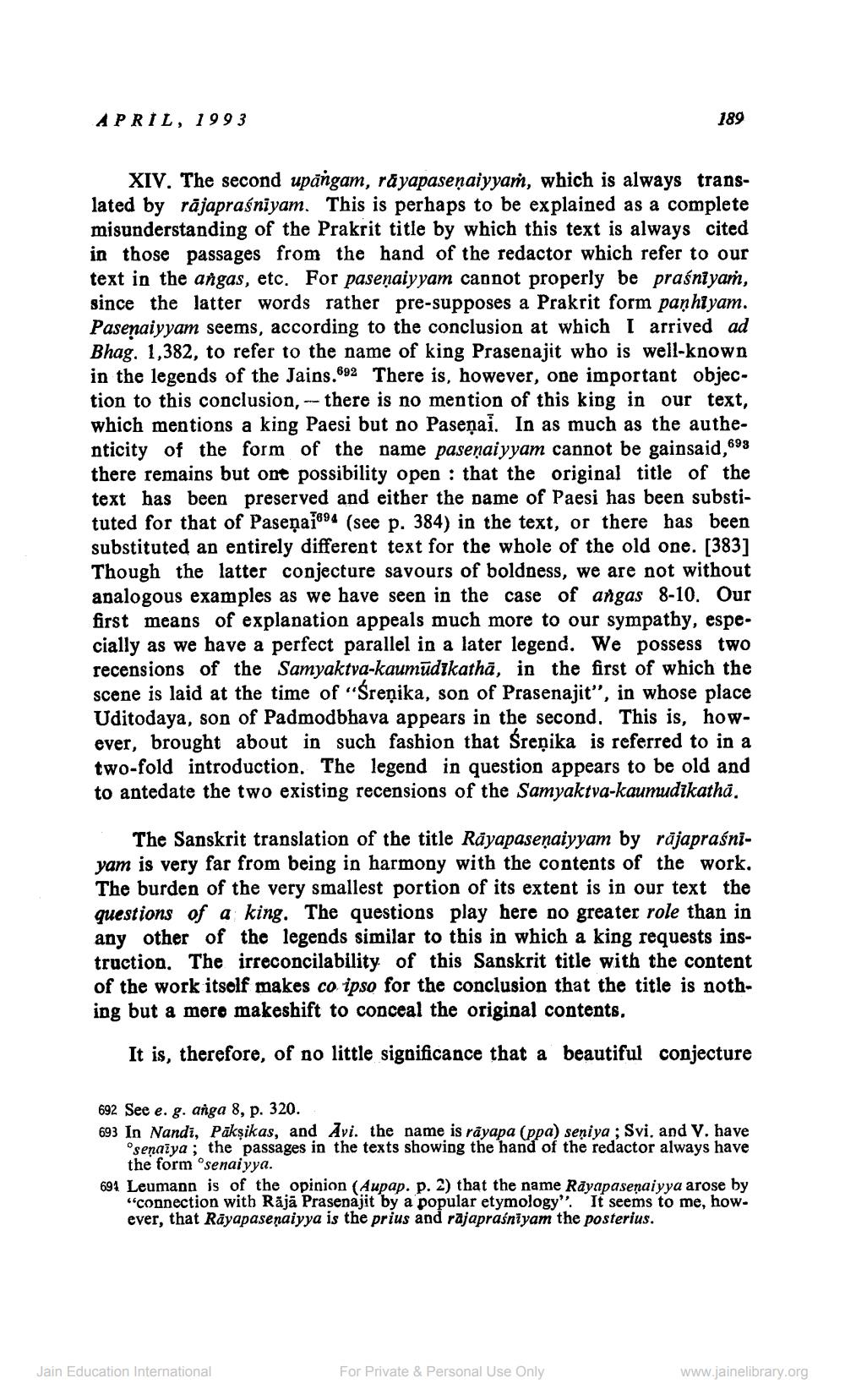________________
APRIL, 1993
XIV. The second upāngam, rāyapaseṇaiyyam, which is always translated by rajapraśniyam. This is perhaps to be explained as a complete misunderstanding of the Prakrit title by which this text is always cited in those passages from the hand of the redactor which refer to our text in the angas, etc. For paseṇaiyyam cannot properly be praśniyam, since the latter words rather pre-supposes a Prakrit form paṇhiyam. Pasenaiyyam seems, according to the conclusion at which I arrived ad Bhag. 1,382, to refer to the name of king Prasenajit who is well-known in the legends of the Jains.692 There is, however, one important objection to this conclusion, there is no mention of this king in our text, which mentions a king Paesi but no Paseņai. In as much as the authenticity of the form of the name paseṇaiyyam cannot be gainsaid,693 there remains but one possibility open that the original title of the text has been preserved and either the name of Paesi has been substituted for that of Paseņai94 (see p. 384) in the text, or there has been substituted an entirely different text for the whole of the old one. [383] Though the latter conjecture savours of boldness, we are not without analogous examples as we have seen in the case of angas 8-10. Our first means of explanation appeals much more to our sympathy, especially as we have a perfect parallel in a later legend. We possess two recensions of the Samyaktva-kaumūdīkathā, in the first of which the scene is laid at the time of "Śrenika, son of Prasenajit", in whose place Uditodaya, son of Padmodbhava appears in the second. This is, however, brought about in such fashion that Śreņika is referred to in a two-fold introduction. The legend in question appears to be old and to antedate the two existing recensions of the Samyaktva-kaumudikathā.
189
The Sanskrit translation of the title Rayapasenaiyyam by rajapraśniyam is very far from being in harmony with the contents of the work. The burden of the very smallest portion of its extent is in our text the questions of a king. The questions play here no greater role than in any other of the legends similar to this in which a king requests instruction. The irreconcilability of this Sanskrit title with the content of the work itself makes co ipso for the conclusion that the title is nothing but a mere makeshift to conceal the original contents.
It is, therefore, of no little significance that a beautiful conjecture
692 See e. g. anga 8, p. 320.
693 In Nandi, Pakṣikas, and Avi. the name is rayapa (ppa) seniya; Svi. and V. have senaiya; the passages in the texts showing the hand of the redactor always have the form senaiyya.
691 Leumann is of the opinion (Aupap. p. 2) that the name Rayapaseṇaiyya arose by "connection with Räjä Prasenajit by a popular etymology". It seems to me, however, that Rayapaseṇaiyya is the prius and rajapraśniyam the posterius.
Jain Education International
For Private & Personal Use Only
www.jainelibrary.org




